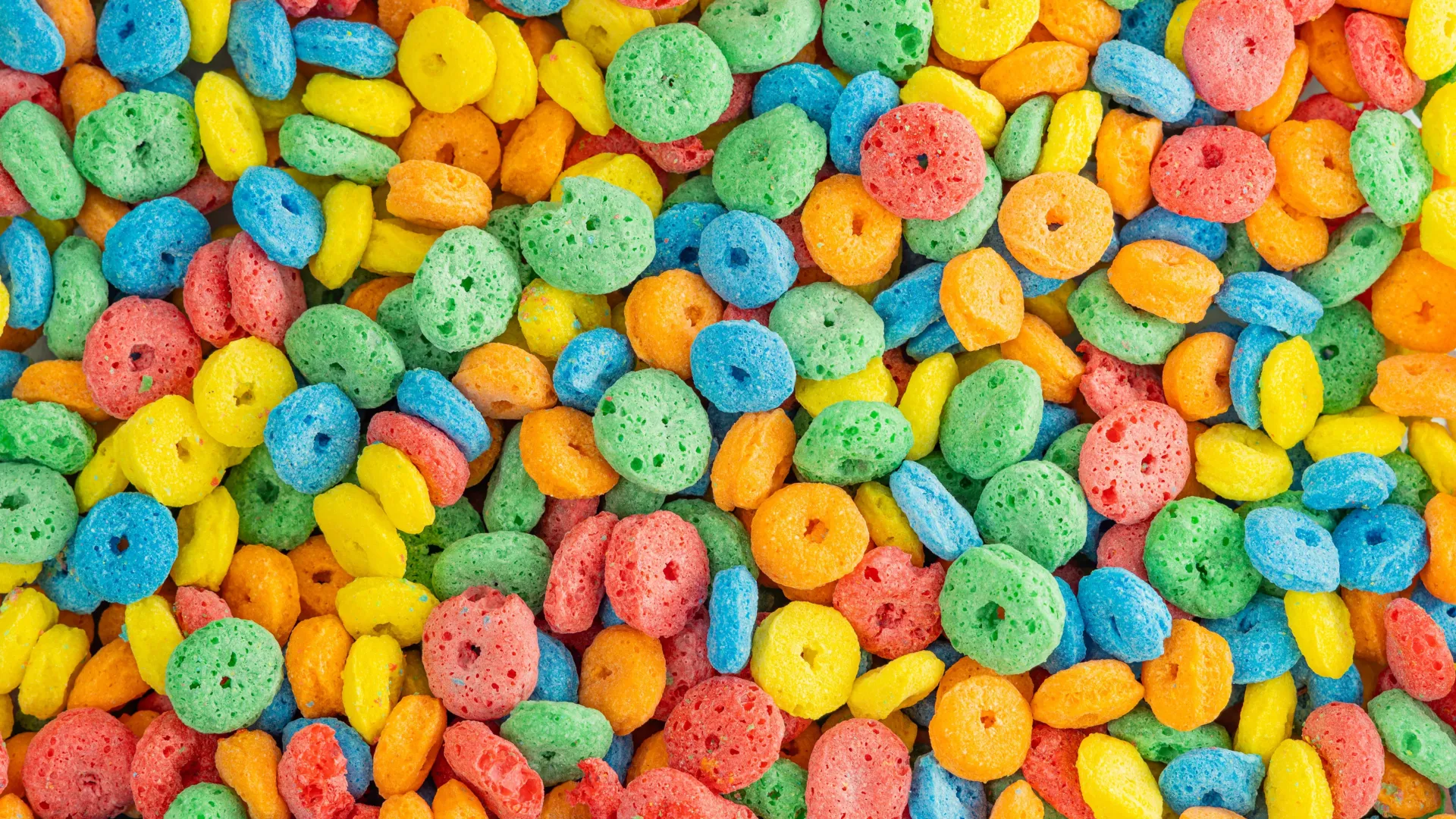The bright colors in your food may be harming your kids
Synthetic dyes and high sugar levels remain common in foods marketed to kids, despite known health risks.
- Date:
- November 7, 2025
- Source:
- George Institute for Global Health
- Summary:
- Almost 20% of packaged foods and beverages in the US contain synthetic dyes, often paired with excessive sugar to attract children. These additives have been linked to behavioral issues, yet remain widespread among major brands like Mars and PepsiCo. Experts criticize the FDA for relying on voluntary reform, contrasting it with Europe’s stricter labeling laws. Growing state-level action offers hope for meaningful change.
- Share:

Nearly one in five packaged foods and drinks in the United States contain synthetic food dyes, according to new research that analyzed 39,763 grocery store products. The study was recently published in the Journal of the Academy of Nutrition and Dietetics.
Synthetic dyes are often added to make foods look more appealing, especially products aimed at children, but a growing body of evidence indicates they may contribute to behavioral problems such as hyperactivity and inattention.¹
Foods Marketed to Children Contain More Dyes and Sugar
Researchers from The George Institute for Global Health, the University of North Carolina, and the Center for Science in the Public Interest examined ingredient information for packaged foods and beverages made by the 25 largest U.S. food manufacturers. They also focused on the five food categories most commonly promoted to children: confectionery, sugar-sweetened beverages, ready meals, breakfast cereals, and baked goods such as cakes, cookies, and pastries.
Products in these child-targeted categories were significantly more likely to include synthetic dyes. Artificial colors were present in 28% of those products, compared with only 11% in other categories. The study also found that foods containing synthetic dyes had much higher sugar content, averaging 141% more sugar (33.3g per 100g compared with 13.8g per 100g in products without dyes).
Experts Express Concern Over Industry Practices
Dr. Elizabeth Dunford, Research Fellow at The George Institute, and Adjunct Assistant Professor, Department of Nutrition at the University of North Carolina, said that the continued presence of synthetic dyes in the food system was a cause for concern.
"Given the accumulation of evidence over the last 40 years pointing to the health harms of synthetic dyes, it's disappointing to see that they're still so prevalent in our food system, particularly in products that are designed to appeal to children," she said.
"The high levels of sugar in these brightly colored products suggests that companies are using synthetic dyes to market sweet foods and beverages, but both ingredients are linked to poor health outcomes."
Major Brands Among Top Offenders
Confectionery companies were found to have the highest use of synthetic dyes, with Ferrero (60%) and Mars (52%) leading the list. More than half (51%) of PepsiCo's energy drinks contained synthetic dyes, along with 79% of all sports drinks, regardless of brand.
Dr. Thomas Galligan, Principal Scientist for Food Additives and Supplements at the Center for Science in the Public Interest, said that synthetic food dyes remain unnecessary in the U.S. food supply, yet efforts to remove them have been slow.
"The FDA recently asked the food industry to voluntarily phase synthetic dyes out of the food supply, but many companies had previously made promises to stop using them and then failed to keep those promises. So, it remains to be seen if food companies will comply with this new request," he said.
"If the FDA were to require warning labels on synthetically dyed foods, similar to the rule in place since 2010 in the European Union, there would be a much stronger incentive for industry to reformulate. Those warnings would also ensure consumers are better able to protect themselves from products sold by companies who choose not to phase dyes out entirely."
State Efforts and Consumer Advice
Dr. Dunford said it was encouraging to see that dozens of U.S. states have now introduced bills targeting synthetic dyes this year. She added that the new research could be valuable to policymakers as they move forward.
"But until the regulatory process catches up with the science, parents and health-conscious consumers should always check the ingredients label for synthetic dyes and for high levels of added sugar. If a product contains either, you are better off not buying it, especially for your kids."
Notes
- California Office of Environmental Health Hazard Assessment. Health Effects Assessment: Potential Neurobehavioral Effects of Synthetic Food Dyes in Children. 2021. https://oehha.ca.gov/risk-assessment/report/health-effects-assessment-potential-neurobehavioral-effects-synthetic-food-dyes-children
Story Source:
Materials provided by George Institute for Global Health. Note: Content may be edited for style and length.
Journal Reference:
- Elizabeth K. Dunford, Thomas M. Galligan, Lindsey Smith Taillie, Aviva A. Musicus. All the Colors of the Rainbow: Synthetic Dyes in US Packaged Foods and Beverages in 2020. Journal of the Academy of Nutrition and Dietetics, 2025; 125 (9): 1207 DOI: 10.1016/j.jand.2025.05.007
Cite This Page: